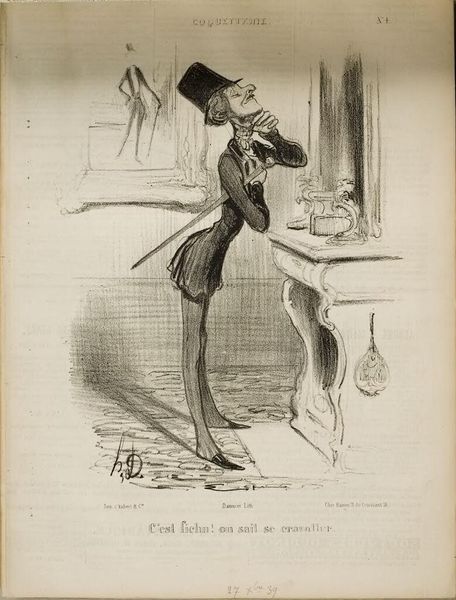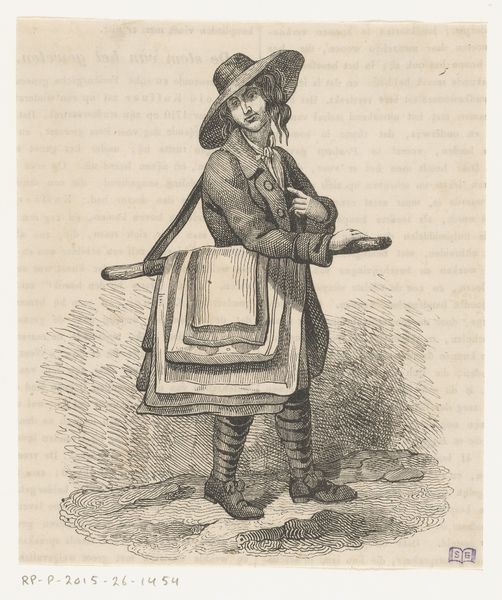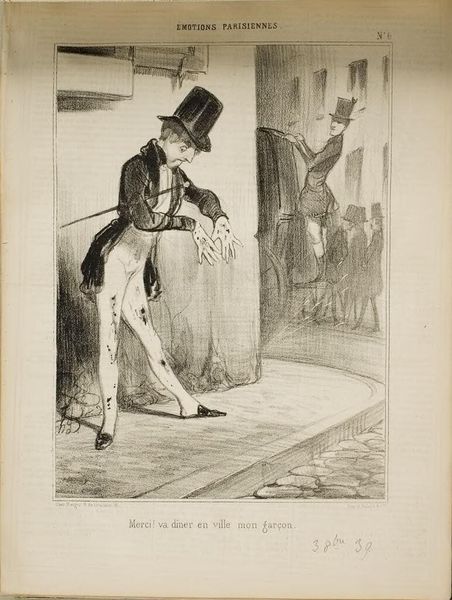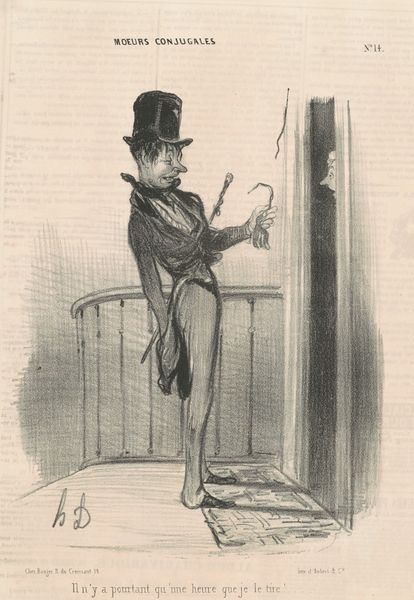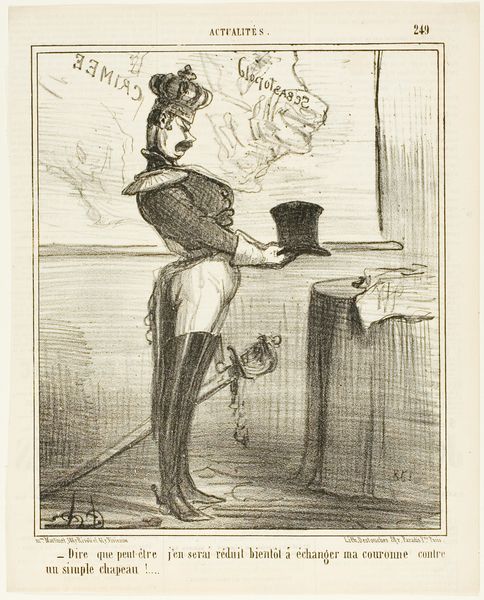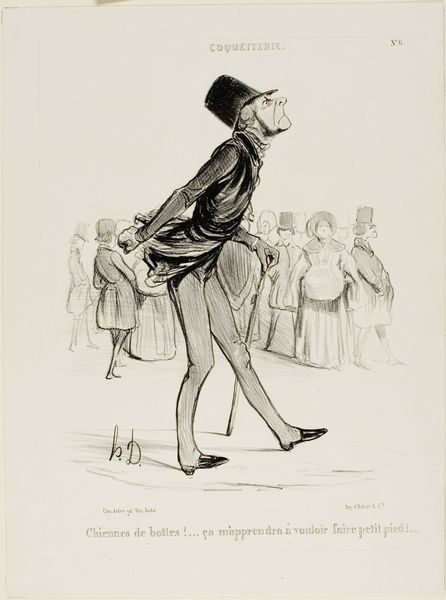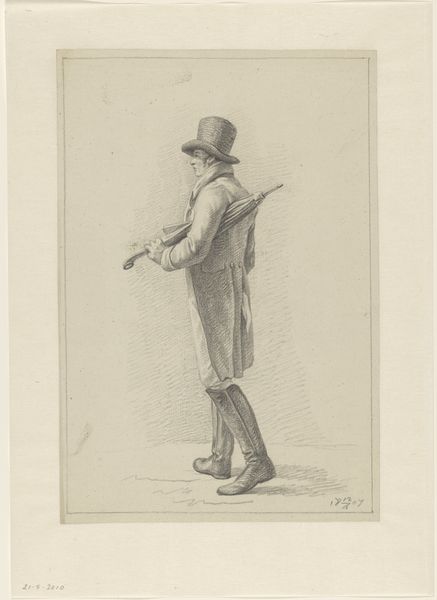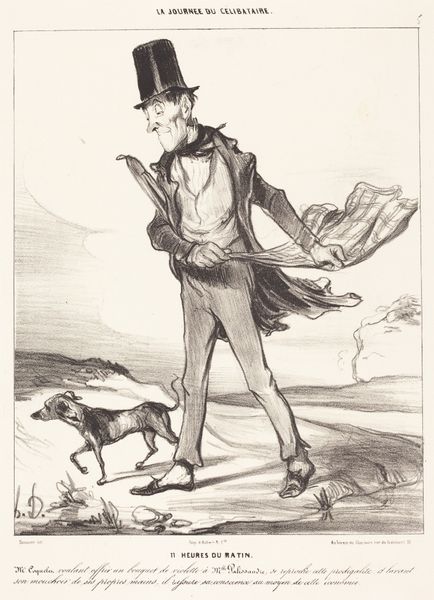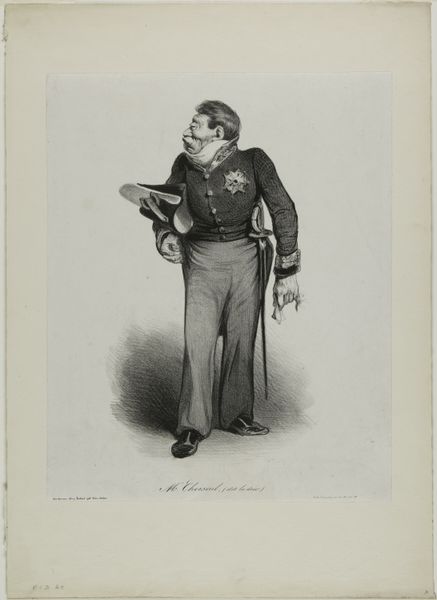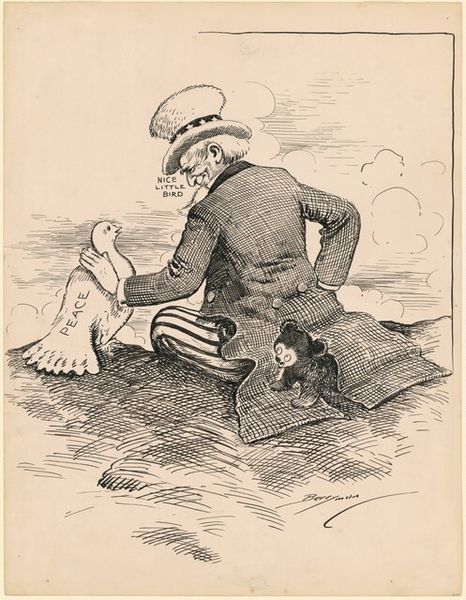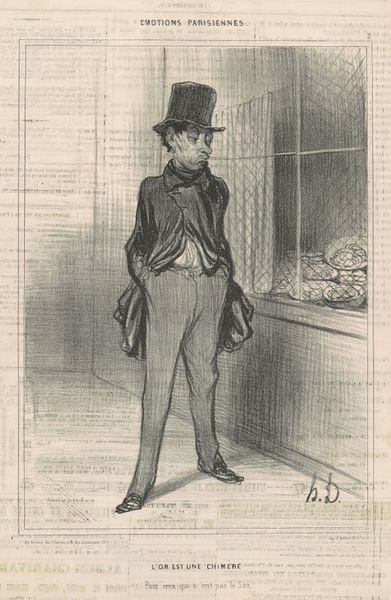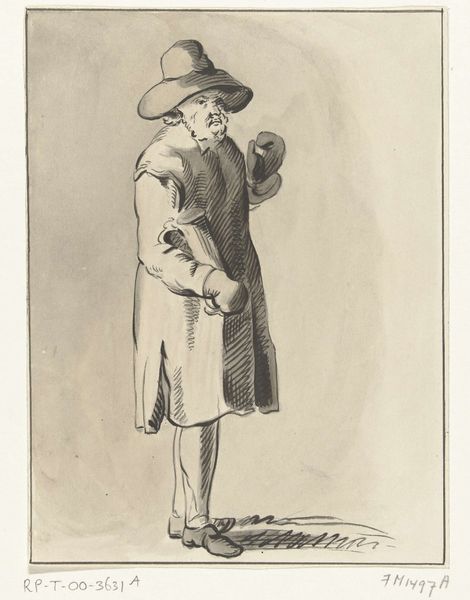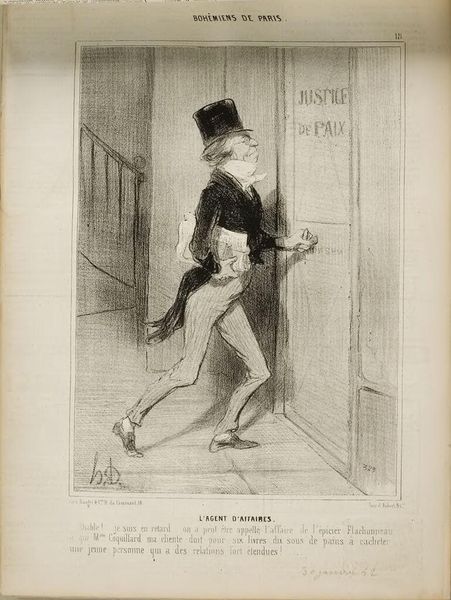
“Indeed, I don't know what they looked like at Austerlitz, but they could hardly have looked any better,” plate 7 from Coquetterie 1839
0:00
0:00
drawing, lithograph, print, paper
#
portrait
#
drawing
#
lithograph
# print
#
caricature
#
paper
#
romanticism
#
france
#
genre-painting
Dimensions: 272 × 196 mm (image); 335 × 249 mm (sheet)
Copyright: Public Domain
This lithograph by Honoré Daumier, whose title translates to "Coquetry", was printed on paper, a material made from cellulose pulp, treated to provide a smooth surface. The lithographic process involves drawing on a stone or metal plate with a greasy crayon, then applying ink that adheres only to the drawn areas. Daumier used this process to great effect, creating subtle tonal gradations through the density of his marks. The material’s capacity for capturing fine lines allowed him to render satirical observations, as seen in this dandy preening himself in the mirror. Lithography’s dependence on reproducibility through mechanical means enabled artists to reach wider audiences. Daumier's choice of this medium reflects its role in mass communication and dissemination of social commentary. It allowed him to engage with issues of class, politics, and the vanity of the bourgeoisie. By examining Daumier's "Coquetterie" through the lens of materials and processes, we gain a richer understanding of its social significance, challenging traditional distinctions between fine art and popular culture.
Comments
No comments
Be the first to comment and join the conversation on the ultimate creative platform.
